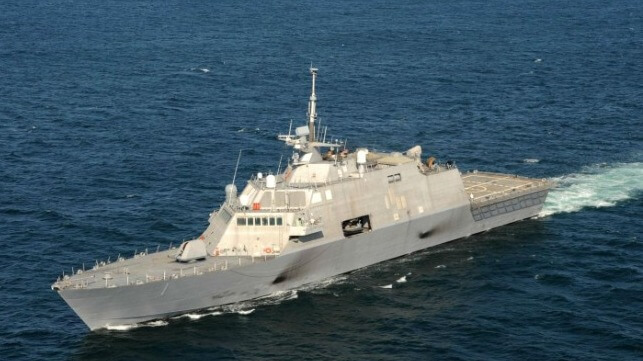U.S. Navy Plans to Retire Nine More Freedom-Class LCS Hulls

In its FY2023 budget request, the U.S. Navy told Congress that it would like to decommission nine Freedom variant Littoral Combat Ships before the end of their expected service life. The plan is an expansion of the Navy's previous attempts to slim down its LCS fleet in order to free up funds for other capabilities.
The nine ships represent every currently-operating Freedom class LCS in the fleet. One more has already been decommissioned early, and three others are slated for decommissioning at the end of this month. The new plan would add USS Milwaukee, Sioux City, Wichita, Billings, Indianapolis and St. Louis to the retirement list.
Though the proposal would leave the Navy without any Freedom-class hulls in the current fleet, six more vessels in the series are in various stages of construction and commissioning and have not yet entered service. These future hulls are not yet affected. The decision also has no effect on the Independence-class series of LCS vessels, which are an entirely different trimaran design.
The two LCS classes were supposed to be able to handle three different mission sets interchangeably using swappable "mission packages" - one for surface warfare, one for mine warfare and one for anti-submarine warfare. Progress on these technology packages has varied: the mine warfare package has advanced in trials after years of work, but the anti-submarine warfare package has lagged.
Top officials said this week that continuing to invest in an as-yet-unrealized ASW capability for LCS does not make sense, especially when the future Constellation-class frigate will have proven ASW systems built in at the yard. Constellation's ASW capability can be substituted for Freedom-class LCS hulls.
Both the Freedom and the Independence LCS classes are expensive to operate, due in part to reliance on private contract technicians for maintenance. However, Navy officials told defense media that it will be less costly from a programmatic perspective to down-select to one class now, keeping the Independence-class and treating the Freedom-class as a $4.5 billion sunk cost.
The Navy could have taken this choice to down-select to one hull design at the outset of LCS production in 2010-11, but opted to continue with two separate programs. It considered the same choice during a review in 2017 and again opted to keep both.

that matters most
Get the latest maritime news delivered to your inbox daily.
By retiring the Freedom-class hulls, the Navy will also save on the cost and time of fixing the ships' faulty combining gears. An underbuilt ball bearing for a clutch in the vessel's CODAG combining gear has failed repeatedly, forcing the Navy to limit speed for all Freedom-class hulls to 34 knots. That would be fast enough for most warships, but the design's main strength (and the reason for its limited combat capabilities) is in its ability to sprint above 40 knots - which it currently cannot do. The speed restriction will be in effect until tougher journal bearings can be retrofitted onto every unit. It is not a simple matter: the first repair, carried out on USS Minneapolis-St. Paul last year, took six months to complete.
The Navy also wants to decommission five Ticonderoga-class cruisers - a longstanding objective, repeatedly overriden by Congress - along with two expeditionary transfer docks, four landing dock ships and two Los Angeles-class attack subs.
